If you’ve landed here, chances are you’ve noticed something amiss with your furry friend’s nails. Those once sturdy nails, ready for play and adventure, might now appear frail or easily broken. It’s a worry we’ve all had: Why are my dog’s nails brittle? Are they painful? And importantly, what can I do about it? As an expert in canine health, I’ve delved deep into this topic to provide you with the most up-to-date insights and solutions. Our companions depend on us to keep them hale and hearty, so let’s journey together through the possible causes of brittle nails in dogs and uncover the solutions to ensure their paws remain strong and healthy. Your dog’s comfort and well-being are paramount, and I’m here to guide you every step of the way. Let’s get started! 🐶🐾
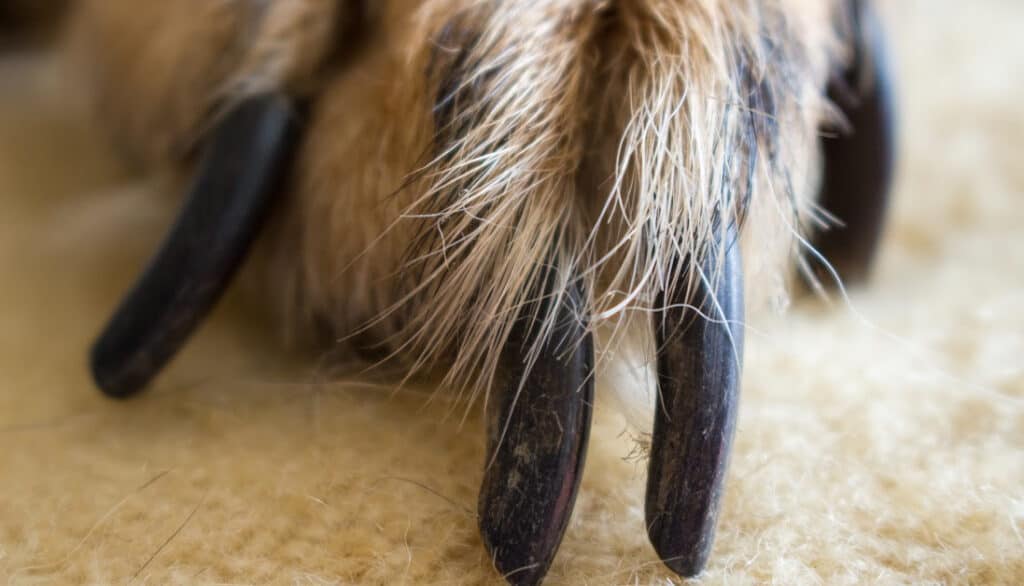
Brittle Nails in Dogs – A Common Issue with Many Causes
Our canine friends experience a variety of health issues, some of which may go unnoticed until they become a significant concern. Among these, brittle nails are a prevalent, yet often overlooked problem. While we often admire those cute paws, we might not always realize what their nails are trying to tell us. Let’s explore some common causes of brittle nails in dogs.
1. Nails That are too Long
A common mistake many pet owners make is not trimming their dog’s nails regularly. When nails become too long, they’re more likely to split, crack, or break. Long nails can also affect your dog’s gait and lead to joint problems over time. It’s essential to ensure regular nail trims to prevent such issues.
2. Rough Play
Dogs love to play! However, constant digging, roughhousing with other dogs, or scraping their nails on hard surfaces can weaken and eventually break them. While play is vital for their mental and physical health, it’s crucial to monitor the kind of play and its impact on their nails.
3. Fungal Infections
Just like humans, dogs can also contract fungal infections in their nails. This can result in discoloration, brittleness, and sometimes an odd odor. If you suspect a fungal infection, it’s best to consult with your veterinarian for appropriate treatment.
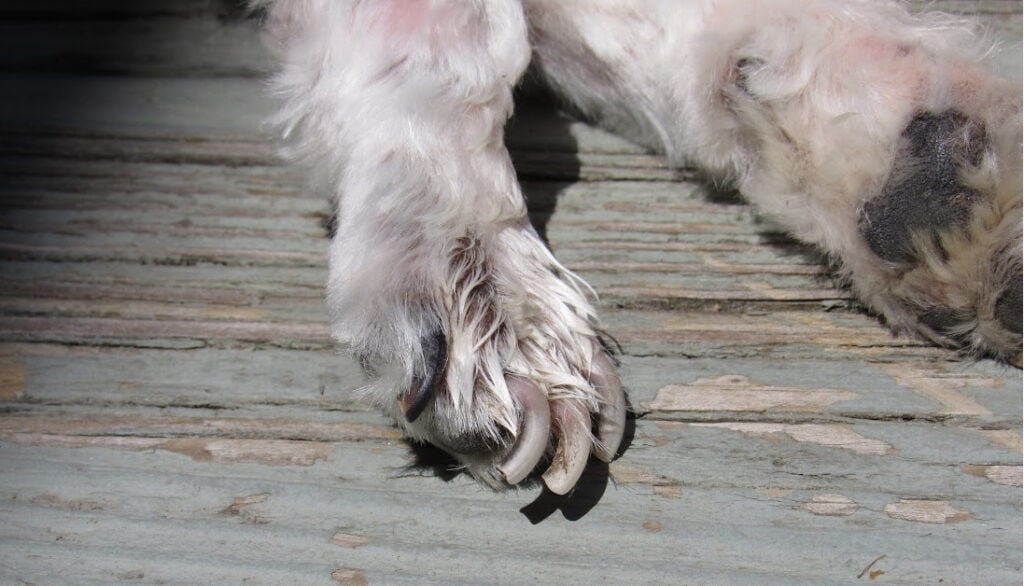
4. Nail Bed Tumors
Although rare, nail bed tumors can be a cause of brittle nails in dogs. Signs might include swelling, chronic infections, or discoloration of the nail or nail bed. Any sudden changes in your dog’s nails or surrounding skin should be addressed with your vet immediately.
5. Symmetrical Lupoid Onychodystrophy
This is a mouthful, isn’t it? Symmetrical Lupoid Onychodystrophy (SLO) is an immune-mediated condition where a dog’s body attacks its own nail beds. This results in painful, brittle nails that often fall off. While the exact cause of SLO isn’t known, there are treatments available to manage the condition.
6. Improper Nutrition
You are what you eat, and the same goes for our furry friends. A balanced diet is vital for overall health, including nail strength. Deficiencies in certain nutrients, like biotin, can result in brittle nails. It’s essential to ensure that your dog’s diet is nutritionally balanced and consult your vet if you suspect any deficiencies.
While brittle nails in dogs can arise from various causes, understanding and identifying the root of the issue is crucial. Regular check-ups, proper grooming, and monitoring play can make a significant difference in the health of those tiny paws. Always consult with a veterinarian if you’re unsure about your dog’s nail health.
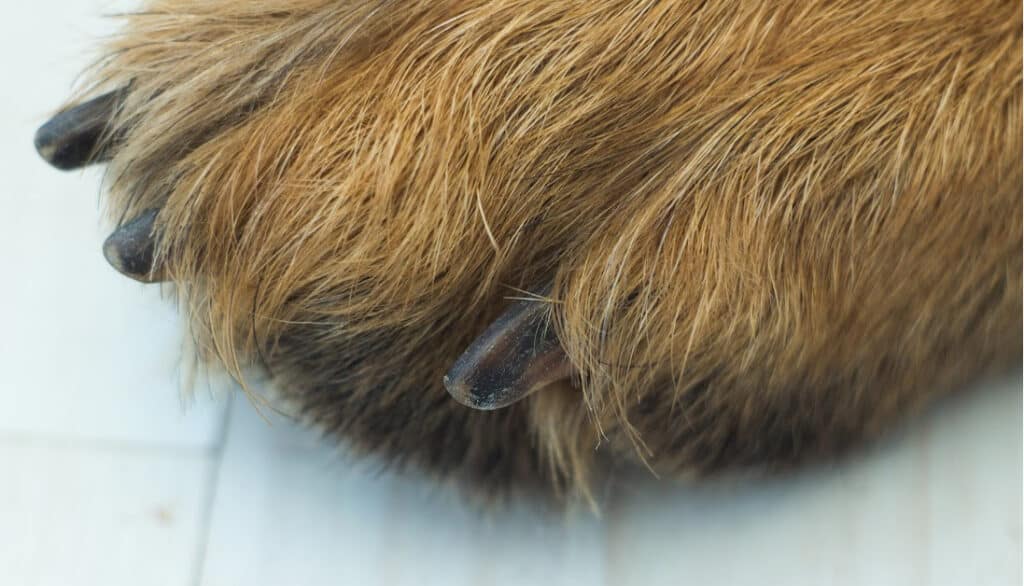
Brittle Nails are More Than Painful
As a dog lover, watching your canine companion struggle with any health issue is heart-wrenching. Brittle nails might seem like a minor concern at first glance. After all, it’s just their nails, right? Well, not quite. The implications of brittle nails in dogs go beyond the pain they might experience. It’s essential to understand the deeper repercussions to ensure our four-legged friends lead a comfortable and happy life.
1. Altered Mobility
Imagine walking with an uncomfortable shoe; every step feels like a chore. For dogs with brittle nails, each paw placement can be a painful exercise. Over time, they might adjust their walking pattern to alleviate pain, leading to an unnatural gait. This could result in joint and muscle issues in the long run.
2. Reduced Playfulness
Rough play might be one of the causes of brittle nails, but the converse is also true. Dogs with painful, brittle nails might shy away from play. This can affect their physical activity levels, potentially leading to weight gain, reduced muscle tone, and overall lethargy.
3. Infections
Brittle nails can often chip, crack, or break, exposing the nail bed. This leaves a vulnerable spot for bacteria and fungi, leading to infections. If untreated, these infections can become chronic issues, causing even more pain and potential complications.

4. Behavioral Changes
Pain and discomfort can induce behavioral changes in dogs. Your otherwise cheerful pup might become irritable, withdrawn, or even aggressive. They may also start licking or biting at their nails excessively, trying to alleviate the discomfort.
5. Reduced Quality of Life
Just as in humans, constant pain or discomfort can significantly reduce a dog’s quality of life. They might become less interactive, spend more time sleeping or lying down, and show decreased interest in activities they once enjoyed.
6. Increased Vet Visits and Costs
Brittle nails might necessitate more frequent trips to the vet, especially if there are associated infections or if the cause is an underlying health condition. This can result in increased veterinary costs over time.
Addressing the issue of brittle nails in dogs isn’t just about avoiding pain – it’s about ensuring their overall well-being and happiness. Recognizing the profound impact brittle nails can have on a dog’s life underscores the importance of preventive care, regular checks, and prompt treatment. Our dogs offer us unconditional love and joy; it’s our responsibility to ensure they live their lives to the fullest, free from pain and discomfort.
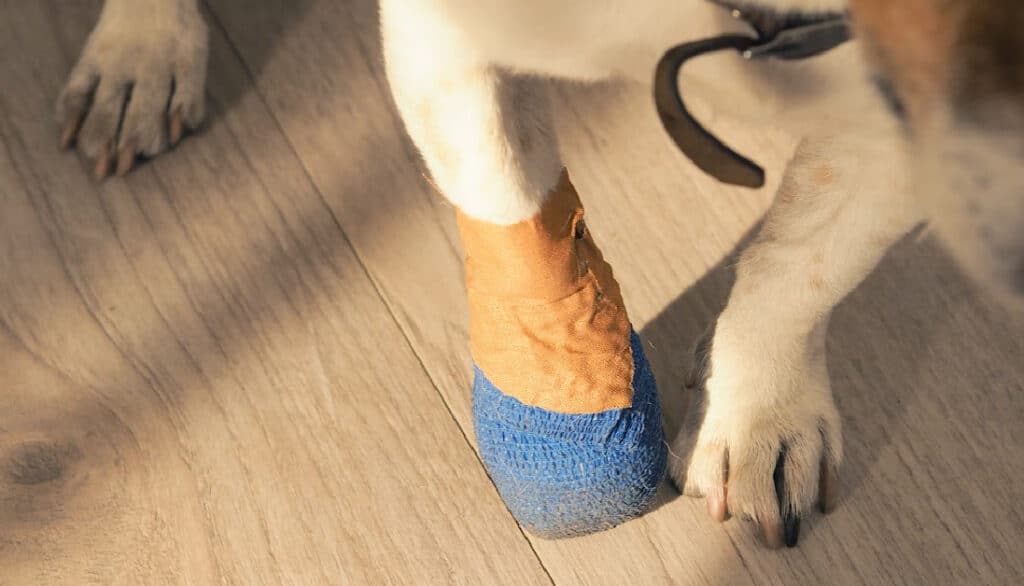
How to Strengthen Dogs’ Nails
Watching your furry friend limp or refrain from play because of brittle nails can be distressing. But don’t fret! There are several steps you can take to help strengthen your dog’s nails and restore their zest for life. Let’s explore some tried-and-true methods to ensure those paws are in tip-top shape.
Omega-3 Supplements
Omega-3 fatty acids, commonly found in fish oil, are renowned for their myriad health benefits, including promoting better skin and nail health. By integrating Omega-3 supplements into your dog’s diet, you can potentially reduce inflammation, increase nail strength, and boost overall skin health. Always consult with your veterinarian for the appropriate dosage and recommendations tailored to your dog’s specific needs.
Biotin Supplements
Biotin, a part of the vitamin B complex, is essential for maintaining healthy skin, hair, and nails. Deficiencies in biotin can lead to brittle, weak nails in dogs. While many commercial dog foods already contain adequate amounts of biotin, a supplement can sometimes be beneficial for those pups with nail issues. Again, it’s best to seek advice from your vet before starting any new supplement.
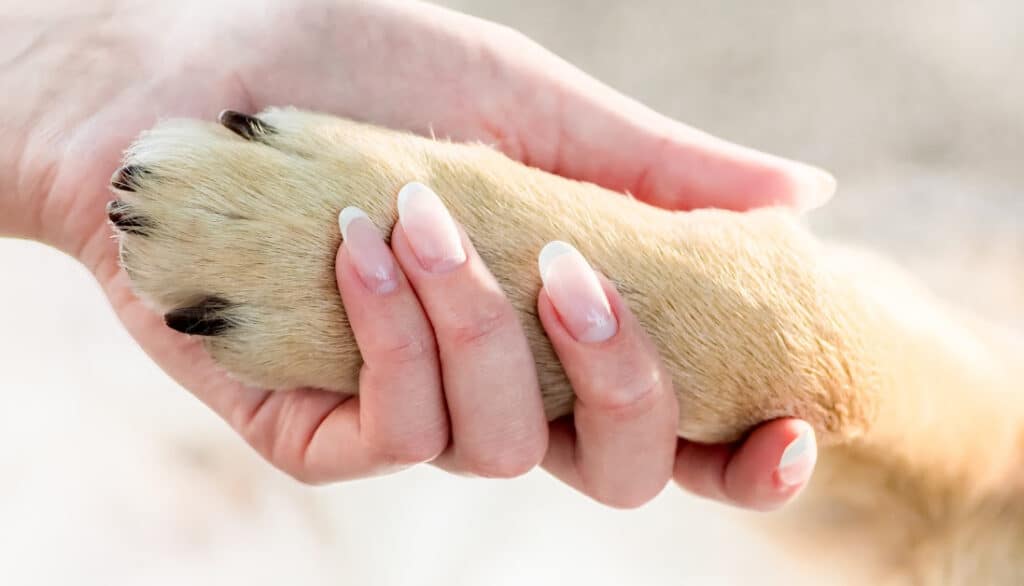
Collagen Supplements
Collagen, a primary protein found in the body, plays a crucial role in maintaining the structural integrity of nails, skin, and hair. As dogs age, their natural collagen production can decrease. Offering collagen supplements can help restore some of this loss, leading to stronger and healthier nails. There are various canine-friendly collagen supplements available in the market, but always opt for high-quality products and consult with your vet for guidance.
Routine Nail Trimming
Keeping your dog’s nails trimmed isn’t just about aesthetics. Regular trims prevent the nails from becoming too long, which can lead to them being more prone to breaking. Furthermore, the act of trimming itself can promote healthier nail growth. Ensure you’re using the right tools, and if you’re unsure about the proper trimming technique, seek guidance from your veterinarian or a professional groomer.
Healthy Diet
Lastly, but most importantly, a balanced diet lays the foundation for all aspects of health, including nail strength. Ensure your dog’s diet is rich in quality proteins, essential fatty acids, vitamins, and minerals. Sometimes, merely switching to a higher-quality dog food can make a noticeable difference in nail health. A nutrient-rich diet not only promotes stronger nails but also supports overall well-being.
Strengthening your dog’s nails is a combination of the right nutrition, supplements, and regular care. With consistent efforts and a proactive approach, those brittle nails can be a thing of the past. Here’s to happy paws and even happier playtimes! 🐾

Conclusion
Our four-legged friends rely on us for their well-being, and their nails, though often overlooked, play a pivotal role in their overall health and comfort. From understanding the underlying causes of brittle nails to employing proactive strategies for nail health, we’ve journeyed together through the labyrinth of canine nail care. With the right balance of nutrition, supplements, and regular attention to those precious paws, we can ensure that our furry companions trot beside us with strength and vitality.
Let’s make a pact to prioritize our dogs’ nail health, ensuring every step they take is filled with joy, confidence, and love. Remember, our canine buddies give us a lifetime of loyalty, tail wags, and unconditional love. Let’s reciprocate by giving them the best care possible, right down to the tips of their toes. Happy paw-renting, and may every dog’s journey be filled with bounding leaps and healthy landings! 🐾❤️

Frequently Asked Questions (FAQs)
The ideal frequency varies depending on your dog’s activity level and where they play. Generally, most dogs need nail trimming every 3-4 weeks. However, if you hear their nails clicking on hard floors, it’s a sign they might need a trim sooner.
While certain human supplements are safe for dogs, it’s essential to ensure the correct dosage and ensure there are no added ingredients harmful to pets. It’s always best to consult with your veterinarian before giving any human-grade supplements to your dog.
Some dogs can be nervous about nail trims. It’s crucial to create a calm environment and associate nail trimming with positive rewards. If your dog continues to resist, you might consider seeking a professional groomer or veterinarian for assistance, at least initially.
Signs of a nail bed infection in dogs include swelling, redness, discharge, an unpleasant odor, and noticeable pain when the area is touched. If you suspect an infection, it’s vital to seek veterinary care immediately.
While puppies might have softer nails than adults, they shouldn’t necessarily be brittle. If you notice your puppy’s nails breaking easily, it could be related to nutrition, their environment, or even genetics. Consult with your veterinarian to determine the cause and best course of action.
